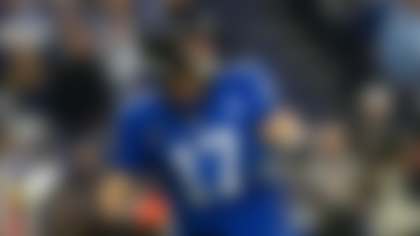PORTLAND, Ore. (AP) - Back in 1998, Oregon and Nike teamed together to tinker with the Ducks' traditional but tired uniforms. Out went emerald green and lemon yellow, in came spruce, mallard and a little something called "lightning."
That was just the start. The gaudy uniform craze that began with Nike co-founder Phil Knight's alma mater has gripped every school from Maryland to Boise State, hitting Notre Dame and Michigan along the way.
Is the NFL next?
Nike is taking over the pros from Reebok with a gala uniform unveiling set for Tuesday in New York City. The design details are a closely guarded secret at the Beaverton-based shoe and apparel maker, but some images - there's no way to know if they're real or fake - have circulated on the Internet.
The biggest changes will likely be in the performance aspect of the uniforms, like newer, lightweight fabrics and a sleek silhouette, though a few teams could get an extreme makeover - football edition.
Nike isn't commenting until the big reveal.
"I think that what we'll see is a subtle homage to the collegiate revolution in uniform design, but in the framework of arguably the most successful sports franchise there is, the NFL, which is more steeped in tradition that the college landscape was when Nike really got into it with Oregon," said Paul Swangard, managing director of the university's Warsaw Sports Marketing Center.
The Ducks signed their contract with Nike in 1996. After the first major overhaul in 1998, the school introduced the Nike-designed "O" logo in 2002.
In 2003's opener against Mississippi State, the Ducks wore neon yellow from helmet to shoe, which some dubbed the "Human Highlighter" look. In 2006, Oregon introduced black uniforms, while "wings" were incorporated into its jersey design in more recent years - a nod to the school's mascot.
"We aren't like USC or Notre Dame or Penn State or Alabama, which are really traditional," said Jim Bartko, the executive senior associate athletics director at Oregon, who has close ties to Knight. "Our philosophy was that every four years we were going to change, so that every player that comes into Oregon in the football program will have a chance to be a part of a design."
Today Oregon has five different helmets, seven jerseys and six pants for 210 possible uniform combinations, enough to carry them through 17-plus seasons, minus bowl games, which usually get new garb. And that's not counting different shoes, socks and undershirts.
Old-schoolers claim that Oregon's countless uniforms are an annoying distraction, while kids see them as cool. There's no doubt that they benefit the Ducks in lots of ways, from merchandise revenue to the immeasurable buzz among potential students and recruits.
"It's taken off," Bartko said. "I don't think we would have ever thought back in 1998 that the uniform craze would be where it is now. Our goal and philosophy has always been to be a step ahead of everybody. If they want to copy us or follow us, that's great. We want to be the leader."
Copycats abound, and even the NFL already has tried throwback uniforms (remember the Green Bay Packers in blue and khaki, with brown helmets?).
But college teams have been far more experimental.
Arguably the most shameless was Maryland's so-called Pride uniform, a hodgepodge of so many elements that one critic suggested it looked as if someone had torn up the state flag and pasted it on a jersey.
The uniforms were the work of Under Armour, whose CEO, Kevin Plank, played football at Maryland. Say what you will about the design, it got noticed.
"If this university had to go pay for that publicity, we'd be broke," Terrapins coach Randy Edsall said at the time.
Many college programs, even the most traditional ones, are now bandwaggoning. Notre Dame and Michigan wore retro Adidas attire to mark last season's first night game at Michigan Stadium.
The Fighting Irish's showy, shamrock-emblazoned helmet still raises the ire of some of ND's more stodgy followers.
"I think in some ways we're seeing now what we always see with marketing, which is that a good idea is originally seen as innovative, but now that everyone is doing it is becoming sort of commoditized," Swangard said. "I think some teams have almost tried too hard, whether it's the highlighter uniforms of Baylor in the tournament, or what Maryland did with their uniforms this past season.
"Now people are doing it just to do it, rather than doing it to convey something about the school's brand or its athletic brand."
A handful of teams, like USC and Penn State, are still shunning the trend for now. But Nebraska - Egads! - will wear an alternate jerseys at a home game this season, athletic director and former coach Tom Osborne told The Associated Press on Monday.
"It does seem to appeal to the student-athletes. Most older fans don't get overly excited about it," he said. "We're walking a fine line because we are traditional, but we also recognize the fact that we don't have to stay the same all the time."
That said, Osborne suggested the iconic "N" on Huskers' helmets isn't going away.
"We will protect our tradition," he said.
AP Sports Writer Eric Olson in Nebraska contributed to this report.



